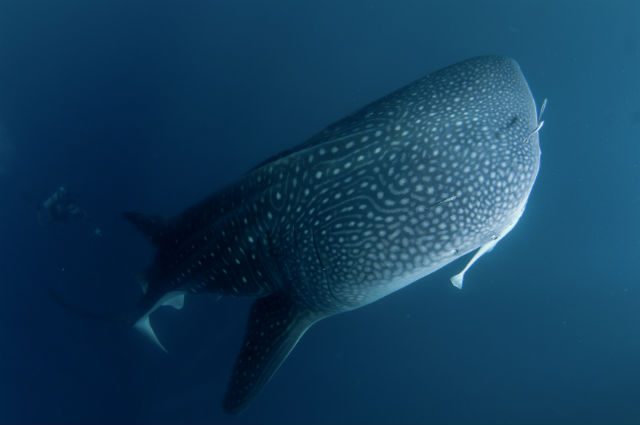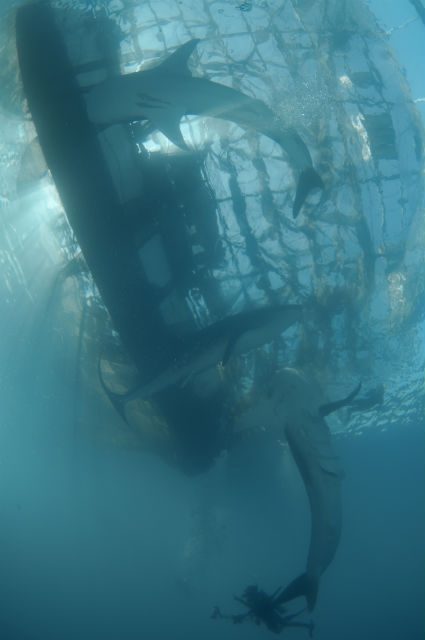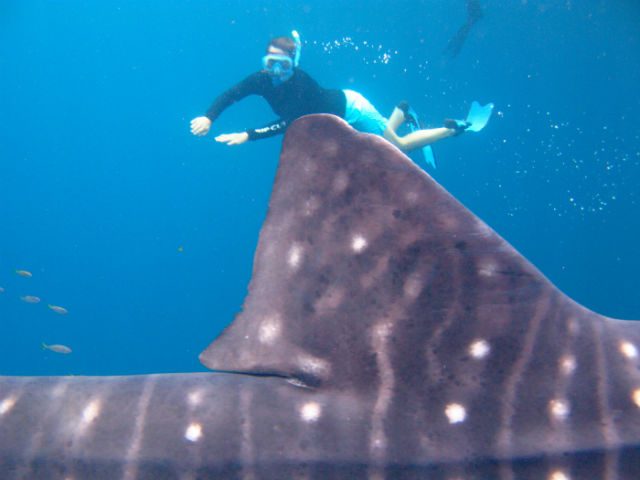SUMMARY
This is AI generated summarization, which may have errors. For context, always refer to the full article.

Imagine snorkeling next to a whale shark, swimming alongside the biggest fish on the planet. The behemoth is the size of a bus, and you’re so close you can see inside their gaping mouths whenever they jut their jaw out in front of you.
And when they swim past you, you have to dart out of the way to avoid a sweeping tail that could break your leg!
Swimming with whale sharks – which weigh in at an average of 9,000 kilograms and grow up to 18 meters long – is a once-in-a-lifetime experience. But for adventurers who make the time to travel to Papua, it’s just another day at Cendrawasih Bay.
Cendrawasih Bay National Park is Indonesia’s largest marine national park and the year-round playground of whale sharks, which are currently listed as a vulnerable species. They are still hunted down in parts of Asia, such as the Philippines.
Muljadi Pinneng Sulungbudi, an award-winning underwater photographer and TEDx speaker, puts Cendrawasih Bay’s whale sharks at the top of his list.
“On my first encounter with the whale sharks in Cendrawasih Bay,” Pinneng says, “I saw 7 whale sharks in a day and I managed to take a photo of 4 of them in one frame. What else to say? I think that experience says it all.”
Everyday occurrence
In most parts of the world, swimming with whale sharks is a seasonal event based on migratory patterns. But in Cendrawasih Bay, which boasts of 40-meter visibility, these gentle giants visit every day.
Syafruddin, a local fisherman in Kwatisore Village, near the town of Nabire, says a visit from dozens of gurano bintang is just part of the morning routine. Gurano means shark and bintang means stars, because its body is spotted with white dots that resemble stars.

Every morning, like clockwork, he and other fishermen greet the whale sharks at their bagan – floating platforms – and feed them with ikan puri, or tiny fish, for good luck as part of their morning ritual. They’re so familiar with the giant creatures, they’ve gone as far as naming a few of their favorites.
So while divers around the world dream of an encounter with the magnificent fish, for the fishermen in Cendrawasih, it’s an everyday occurrence.
Apart from the whale sharks, Cendrawasih Park is also home to 4 species of turtles – hawksbill turtle, the common green turtle, the Pacific ridley turtle, and the leatherback turtle. If it’s your lucky day, you may spot dolphins and dugongs, too!
While the sheer size of a whale shark might be a bit intimidating, there isn’t a gentler creature in the water. Whale sharks are filter feeders, who use their large mouths, much like the nets of the fishermen, to gather plankton and other aquatic organisms.
When anyone asks Pinneng for a whale shark recommendation, there’s no question. “If anyone asks me where to see whale sharks, I tell them to take the time to get out to Cendrawasih Bay,” he says.
Travel tips
So, how to get to this whale shark playground?
From the district of Nabire in Papua, where you can fly to, you hitch a 3-hour speedboat ride to Kwatisore. Once you start noticing the bagans dotting the horizon, start asking fishermen which ones have seen whale sharks lately, then head there. The local fishermen would then “call” the whale sharks by throwing buckets of ikan puri into the sea.
Before you know it, the whale sharks will start approaching the bagans. When they do, it’s time to jump into the lozenge blue water and begin your bucket-list swim.

The earlier you are, the better your chances are of seeing the big, mature whale sharks. An early start will also allow you to have more time diving and snorkeling with your new friends. And don’t forget to tip the fishermen who own the floating platforms and help attract the whale sharks. Offer to “pay” for the small fish they feed the whale sharks with. Tips vary, but most guides recommend slipping the fishermen a decent day’s pay. After all, the fishermen are giving you an experience you’ll tell your grandkids about. – Rappler.com
 An Indonesian traveler, avid scuba-diver, and a travel blogger, Nila Tanzil has done solo travel to 28 countries in the world. She enjoys trying new experiences, understanding the local culture and getting to know the local people during her travels. She is also an education advocate with a mission to nurture children’s interest in reading through her initiative in Indonesia called Taman Bacaan Pelangi (Rainbow Reading Gardens), which builds children libraries in remote areas in Eastern Indonesia. Follow her on Twitter at @nilatanzil.
An Indonesian traveler, avid scuba-diver, and a travel blogger, Nila Tanzil has done solo travel to 28 countries in the world. She enjoys trying new experiences, understanding the local culture and getting to know the local people during her travels. She is also an education advocate with a mission to nurture children’s interest in reading through her initiative in Indonesia called Taman Bacaan Pelangi (Rainbow Reading Gardens), which builds children libraries in remote areas in Eastern Indonesia. Follow her on Twitter at @nilatanzil.
Add a comment
How does this make you feel?
There are no comments yet. Add your comment to start the conversation.